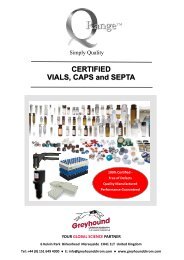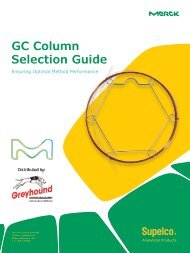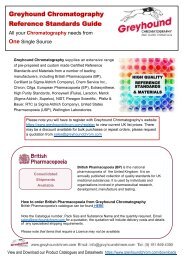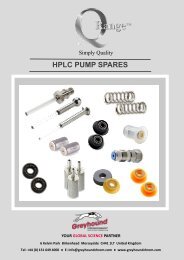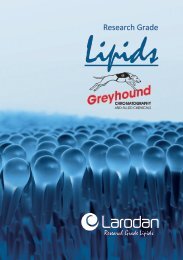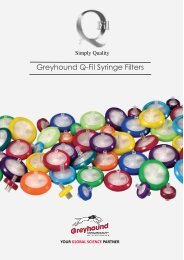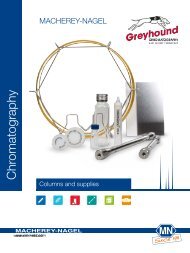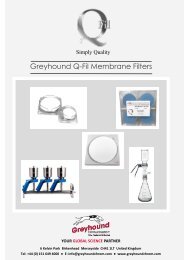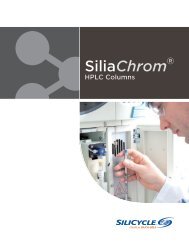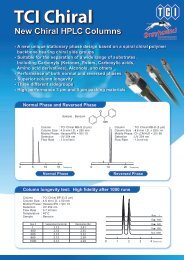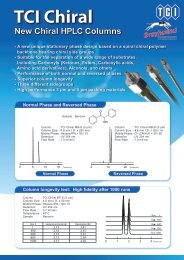You also want an ePaper? Increase the reach of your titles
YUMPU automatically turns print PDFs into web optimized ePapers that Google loves.
NEEDLE TECHNICAL REFERENCE | NEEDLE CARE AND USE<br />
Needle Care and Use (Cont.)<br />
Step 4<br />
Cleaning<br />
Step 5<br />
Storage<br />
Immediately after use<br />
After each use it is critical to flush the sample from the<br />
needle. If the sample contained dissolved particles it is<br />
critical to use a solvent known to dissolve the particles.<br />
For example, if the sample contains proteins, DNA, or salts<br />
then flushing with an organic solvent could precipitate<br />
these particles resulting in a clog. In this case it is better<br />
to flush with a detergent like <strong>Hamilton</strong> Cleaning Solution<br />
Concentrate (page 113), then with deionized water, and<br />
finally with acetone to ensure the needle dries quickly.<br />
1.<br />
2.<br />
After the needle is cleaned according to Step 4, store the<br />
needle with the syringe in the syringe packaging or in the<br />
original needle packaging to keep it protected and clean for<br />
future applications.<br />
3.<br />
4.<br />
After a needle has become clogged<br />
If the needle is clogged and it is not possible to flush with<br />
cleaning solution it is time to use the cleaning wires. Start with<br />
the smallest cleaning wire that can be pushed through the<br />
needle inner diameter. Slowly increase the cleaning wire up<br />
to the size specified for the needle gauge. Once the clog has<br />
been removed, rinse the needle as described above.<br />
117



